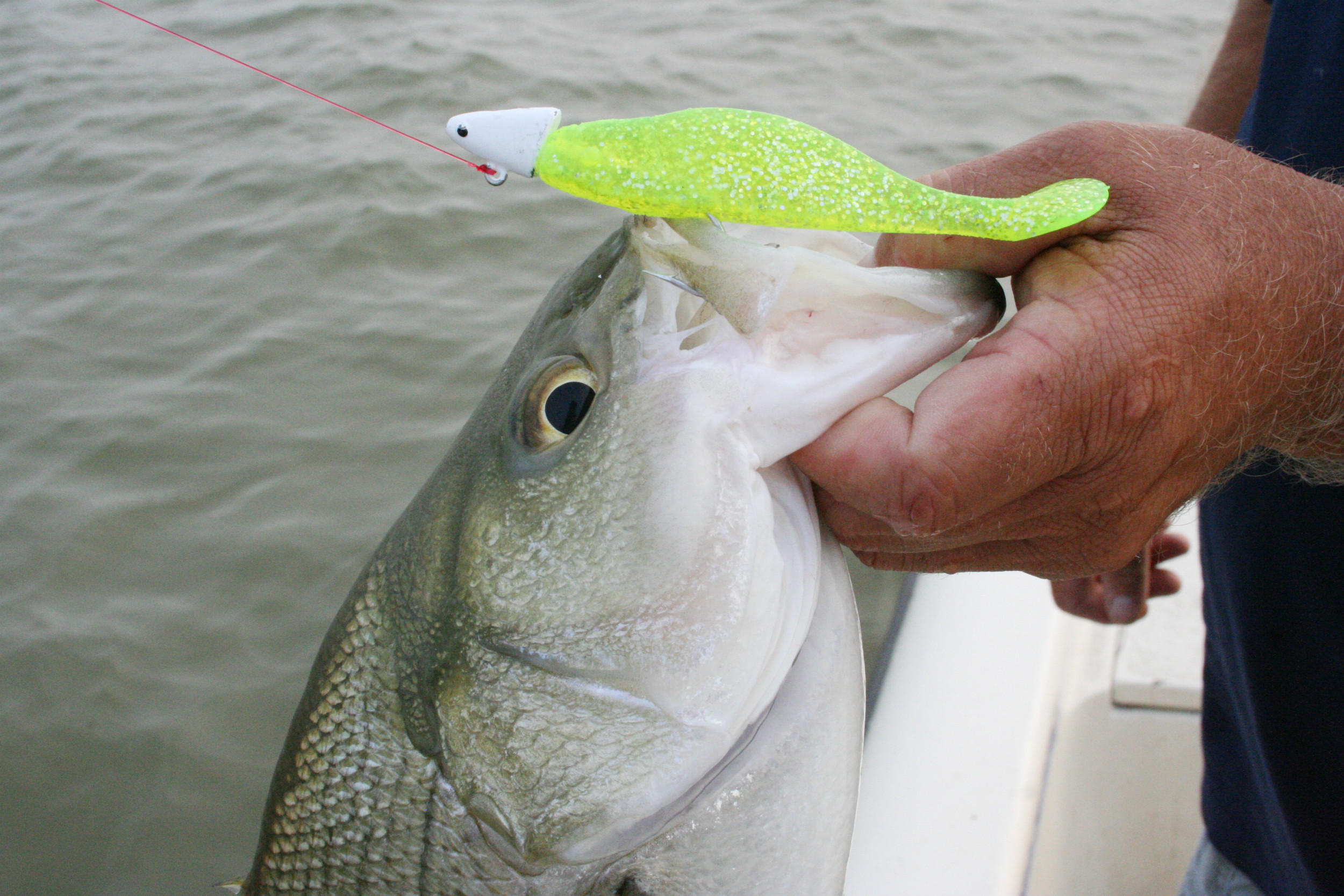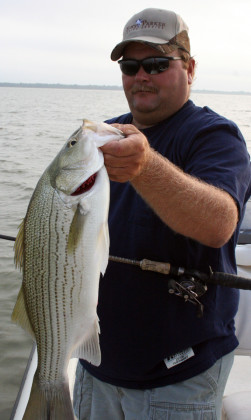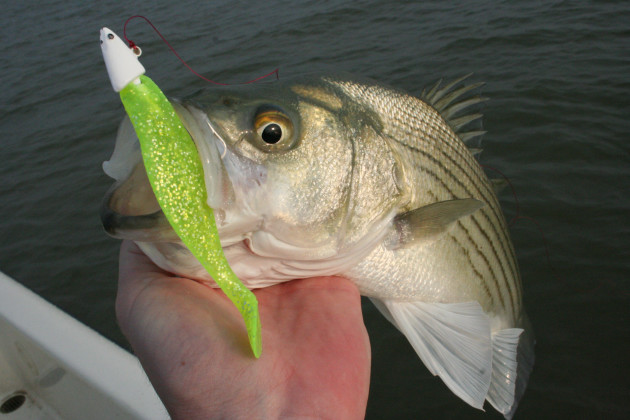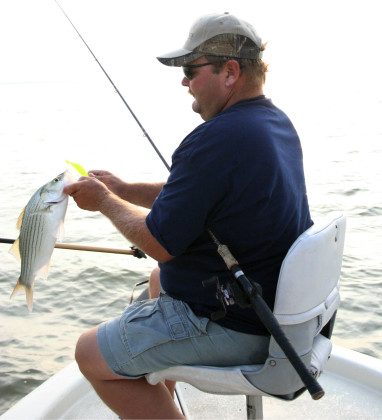BIRTHRIGHT, Texas – Just west of this hamlet nestled among the sprawling thickets of Texas’ post oak prairie sits the best fishery you’ve never seen.
It has only been two decades since Cooper Lake in Delta and Hopkins counties was impounded, but in that time the 19,000-acre reservoir on the Sulphur River arguably has become the best hybrid striped bass lake in the country. However, because the body of water located 90 miles east of the heart of the Metroplex sits just north of well-known largemouth lair Fork and striper fishing sanctuary Tawakoni, it simply doesn’t get the same kind of boat traffic.
That fact sits fine with veteran guide Tony Parker, who has guided anglers for a variety of species on all three lakes since he was in his teens. Parker has plenty of amazing fishing tales about the other two but ask him one question about Cooper, which essentially has turned into his own personal honey hole, and the conversation really sprouts wings.
It’s not hard to see why.
More than 1.7 million hybrid fingerlings have been stocked in Cooper’s depths by Texas Parks and Wildlife Department biologists since 1996, including more than 100,000 on a previous day I fished with Parker. Hybrids, which can’t reproduce, are created by mixing the eggs of a striped bass with the milt of a white bass. The result is offspring that easily can grow larger than 10 pounds in lakes with plenty of forage and which also run in large, aggressive schools. The fish TPWD creates at the Dundee and Possum Kingdom hatcheries is dubbed a “palmetto bass,” while the cross of a male striper with a female white bass that are stocked in other states is termed a “sunshine bass.”
Pound-for-pound, the hybrid is among the biggest fighters in both fresh water and saltwater, and the fish’s aggressiveness only picks up as it gets hotter, which means prime fishing in a place where temperatures will soar into triple digits this summer. Parker swears by fishing afternoons, citing numerous times when a slow morning bite turned into a monstrous show near the surface as voracious fish churned up schooling balls of shad. On one morning outing, we encountered no other boats targeting hybrids, though there were a few aluminum hulls that hit the water in search of crappie. Parker said that even during peak fishing times in the heat of the summer, he sometimes can count the number of other boats he sees all day with both hands and still have an extra couple of fingers left.
Cooper also features prime angling for white bass, which will congregate near schools of hybrids to get in on the feeding frenzy associated with bunches of fleeing gizzard shad whenever possible. In a couple of hours, Parker and I boated 20 hybrids and a half-dozen white bass using chartreuse Sassy Shads on ¾-ounce jigheads. The key to finding the hybrids without lots of bait fish activity was targeting humps and rises in the main portion of the lake. Each time we drifted past terrain that shallowed up to anywhere from 2 to 4 feet we found concentrations of hybrids with white bass mixed in willing to hit the lures we retrieved at a steady pace.
Parker also employs a number of other lures, including the aptly named Sexy Spoon made by Strike King, to which he will attach a bell weight, making the lure flutter after a steady retrieve slows, typically right into a violent hybrid’s mouth. He likes using larger baits, which not only garner more attention from ravenous fish, but suitably mimic their prime prey.
The record hybrid on Cooper tipped the scales at just more than 11 pounds, and though we didn’t catch any near that big, we did manage to find a number of hefty fish that weighed between 6 and 7 pounds and put up plenty of fight. Parker thinks that the lake is due for the next record hybrid, though it’s unlikely to top the colossal state record. That monstrous fish was caught at Ray Hubbard in 1984, weighing almost 20 pounds, and was 35 inches long.
While Cooper features the ideal habitat for open-water species, TPWD also has stocked almost 5.7 million largemouth bass fingerlings into the lake, which has produced an impressive record of 15.17 pounds. The downside for largemouth anglers is that the turbid lake has been prone to large fluctuations in water levels, and even as recently as 2006 and early 2007 many areas that now are easily accessible simply weren’t. However, there remain a number of areas of standing timber along creek areas and some aquatic vegetation that remains relatively stable all year, providing at least a modicum of cover for a variety of fish.
While Cooper Lake remains a relative mystery to many anglers, it’s no secret that fish stockings cost money, especially for hybrids, and TPWD must see stable or increased activity to justify putting more fish in the lake. It’s highly unlikely the agency would ever stop stocking the prized targets in this body of water, but in the days of dwindling budgets it’s certainly something that simply can’t be brushed aside without a thought.
One of the most appealing aspects of Cooper Lake is its associated state park, which is a gem among the public-use destinations across the state. The 3,000-acre state park, which is divided into the larger South Sulphur Unit and the Doctors Creek Unit, features pristine facilities including fully furnished cabins, air-conditioned shelters, boat ramps, equestrian and biking trails, day-use sites and outdoor amphitheatres. For more information on the park, visit www.tpwd.state.tx.us.
For more information on fishing Cooper Lake, visit www.tonyparkerfishing.com.
























Just want to let you know that John’s Creek Lodge is located on Cooper Lake. We have nice, clean rooms with AC/heat, Dirct tv, coffee pots, fridges and micro-waves. The lodge serves food and we sell fishing license. We have live bait and tackle and ice.
Visit our web-site at: http://www.johnscreeklodge.com and our Face Book page.
We also have a conference/party room.
Call us at: 903-395-3223